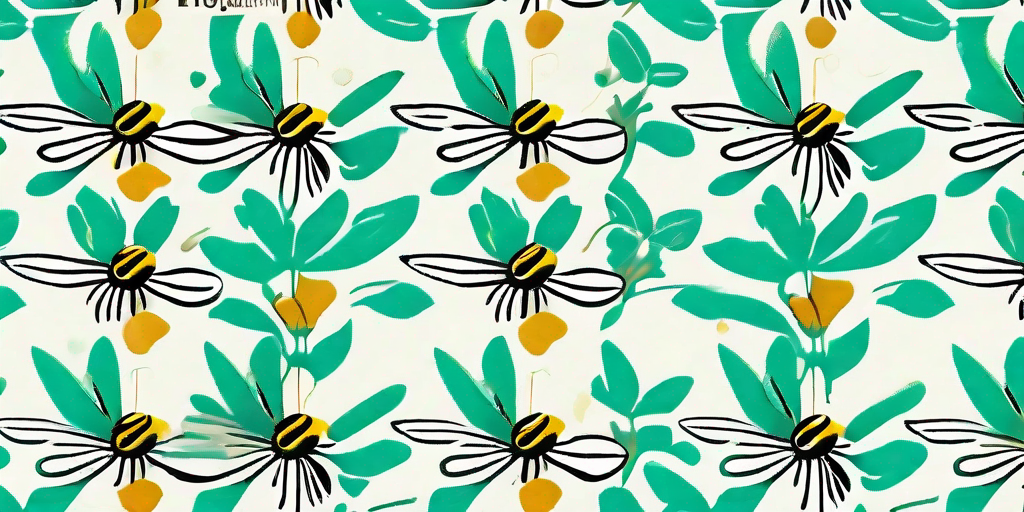
Welcome, dear garden enthusiasts and bee aficionados! Today, we're diving into the world of Bee Balm, a plant that has been causing quite a buzz in the gardening community. Is it a friend or foe to your garden? Let's find out!
The Buzz About Bee Balm
Before we delve into the nitty-gritty, let's first understand what Bee Balm is. Bee Balm, scientifically known as Monarda, is a genus of flowering plants in the mint family. It's a perennial plant, meaning it can live for more than two years, much like your favorite sitcom.
These plants are native to North America, and are known for their vibrant flowers and fragrant leaves. They're like the life of the party in your garden, standing out with their bright colors and aromatic presence.
Why is it Called Bee Balm?
Now, you might be wondering why it's called Bee Balm. No, it's not because it's a favorite spa treatment for bees. The name comes from the plant's attractiveness to bees, butterflies, and other pollinators. It's like a bee magnet, if you will.
However, the 'Balm' part of the name is derived from the plant's balm-like properties. It has been used in traditional medicine for its antiseptic and calming properties. So, it's not just a pretty face!
Benefits of Bee Balm in Your Garden
Now that we've covered the basics, let's move on to the benefits of having Bee Balm in your garden. Spoiler alert: there are quite a few!
Attracting Pollinators
As we've already mentioned, Bee Balm is a hit among pollinators. Having these plants in your garden can attract bees, butterflies, and hummingbirds, which can help in pollination. It's like hosting a party for pollinators, and everyone's invited!
And it's not just about the pollination. Watching these creatures flutter around your garden can be a delightful sight. It's like having your own nature documentary, right in your backyard!
Medicinal Properties
Bee Balm is not just a pretty plant. It has been used in traditional medicine for its antiseptic and calming properties. It's like having a mini pharmacy in your garden.
From treating colds to soothing skin irritations, Bee Balm has a wide range of uses. However, remember to consult with a healthcare professional before using any plant for medicinal purposes. We don't want any unexpected side effects, do we?
Culinary Uses
Did you know that Bee Balm is also edible? Yes, you read that right! The leaves can be used to make tea, and the flowers can add a splash of color to salads. It's like having your cake and eating it too, except with plants.
However, as with any plant, make sure to wash the leaves and flowers thoroughly before consuming. We don't want any unwanted guests in our food, do we?
Potential Downsides of Bee Balm
Now, it's not all sunshine and rainbows with Bee Balm. There are a few potential downsides that you should be aware of.
Prone to Mildew
Bee Balm plants are prone to powdery mildew, a fungal disease that can affect the leaves. It's like the plant's version of a bad hair day, except it's not just about looks. This can affect the plant's health and vigor.
However, there are resistant varieties available, and proper care can help prevent this issue. So, don't let this deter you from inviting Bee Balm to your garden party!
Can Be Invasive
Another potential downside is that Bee Balm can be invasive. It can spread quickly and take over your garden if not managed properly. It's like that guest who overstays their welcome at a party.
However, with proper care and management, you can prevent Bee Balm from becoming a garden bully. After all, it's your garden, and you're the boss!
Frequently Asked Questions
- Is Bee Balm easy to grow?
Yes, Bee Balm is relatively easy to grow. It's like that friend who's always up for a hangout, no matter the time or place.
- Does Bee Balm come in different colors?
Yes, Bee Balm comes in a variety of colors, including red, pink, purple, and white. It's like a rainbow in your garden!
- Can I grow Bee Balm in a pot?
Yes, you can grow Bee Balm in a pot. However, make sure to give it enough space, as it can grow quite large. It's like that friend who always needs extra legroom on a road trip.
Conclusion
So, is Bee Balm a garden friend or foe? Well, like most things in life, it depends. With its pollinator-attracting properties, medicinal uses, and culinary potential, Bee Balm can be a great addition to your garden.
However, its susceptibility to mildew and invasive nature can pose challenges. But with proper care and management, these issues can be mitigated.
In the end, whether Bee Balm is a friend or foe to your garden is up to you. But one thing's for sure: it's definitely a friend to the bees!















